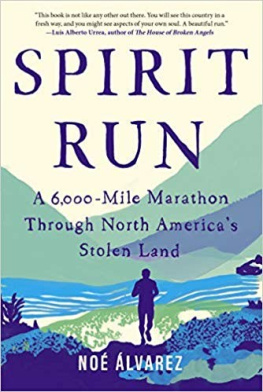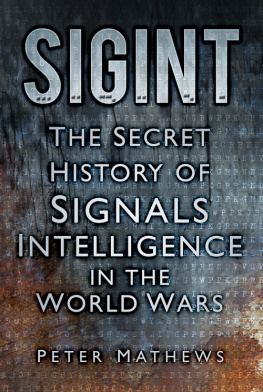Contents

Secret Messages
Modern War Studies
Theodore A. Wilson
General Editor
Raymond A.Callahan
J. Garry Clifford
Jacob W. Kipp
Jay Luvaas
Allan R. Millett
Dennis Showalter
Series Editors
Secret Messages
Codebreaking and
American Diplomacy,
19301945
David Alvarez

2000 by the University Press of Kansas
All rights reserved
Published by the University Press of Kansas (Lawrence, Kansas 66045 ), which was organized by the Kansas Board of Regents and is operated and funded by Emporia State University, Fort Hays State University, Kansas State University, Pittsburg State University, the University of Kansas, and Wichita State University
Library of Congress Cataloging-in-Publication Data
Alvarez, David J.
Secret messages : codebreaking and American diplomacy, 19301945 /
David Alvarez.
p. cm. (Modern war studies)
Includes bibiliographical references and index.
ISBN 0-7006-1013-8 (cloth : alk. paper)
ISBN 978-0-7006-2290-0 (ebook)
1. World War, 19391945Cryptography, 2. CryptographyUnited
StatesHistory20th century. 3. World War, 19391945Diplomatic history.
4. United StatesForeign relations19331945. I. Title, II. Series.
D810.C88 A48 2000
940.548673dc21
99-049798
British Library Cataloguing-in-Publication Data is available.
Printed in the United States of America
10 9 8 7 6 5 4 3 2 1
The paper used in this publication is recycled and contains percent postconsumer waste. It is acid free and meets the minimum requrements of the American National Standard for Permanence of Paper for Printed Library Materials Z39.48-1984.
THIS ONE IS FOR GRANT.
ACKNOWLEDGMENTS
T he research for this book was completed while I held an appointment as scholar-in-residence at the National Security Agencys Center for Cryptologic History. I owe a special debt to David Hatch, the centers director, for inviting me to spend a year at NSA and for shepherding me through the agency and its culture. Everyone at the agency made me feel welcome, but several individuals deserve special thanks. The history staff, Bob Hanyok, Tom Johnson, Sharon Maneki, and David Mowry all contributed to making the year the most professionally rewarding of my career. At NSAs National Cryptologic Museum, Jack Ingram and Larry Sharpe opened their library and facilities to me. Robert Louis Benson generously shared his voluminous knowledge of wartime signals intelligence operations and arranged for the agency to declassify for me portions of his multivolume history of the VENONA program. Although it supported this project, the National Security Agency did not review or approve the manuscript. The end result does not necessarily reflect the official position of the National Security Agency or the United States government.
The bibliography identifies the many veterans of the Signal Intelligence Service and its wartime successors who reminisced about their experiences and provided insight into personalities and operations. One in particular deserves special mention. Cecil Phillips took a special interest in my project and went out of his way to facilitate the research by introducing me to his former colleagues at Arlington Hall and by illuminating various cryptanalytic operations, especially those of the Russian section in which he served with such distinction. His untimely death is a great personal loss to those who knew him and a professional loss to intelligence historians who benefited from his counsel.
At the National Archives John Taylor once again guided me through the intelligence records of the United States government, a task he has patiently performed since, as a callow graduate student. I first appeared at his desk at old archives more than twenty-five years ago.
Several colleagues contributed significantly to the completion of this project. Ralph Erskine generously shared the results of his research in the archives of the Government Code and Cypher School and was always available to discuss the finer points of wartime signals intelligence. Every chapter is better for his advice. Carl Boyd and John Ferris reviewed the entire manuscript, and their thoughtful comments were invaluable. David Kahn read several chapters and was a constant source of advice and encouragement. Steve Budiansky provided information from his work in OP-20-G records. Frode Weirud patiently responded to my questions concerning cipher machines and signals intelligence operations in Scandinavia.
My home institution, Saint Marys College of California, provided a sabbatical during which I finished writing this project.
My family lived with this book for two years and patiently endured its demands, including two moves across the continent. My wife, Donna, remained cheerful and supportive throughout the ordeal. This book could not have been begun, let alone finished, without her understanding and encouragement.
ABBREVIATIONS
| ANCIB | Army-Navy Communications Intelligence Board |
| BSC | British Security Coordination |
| DESAB | Deutsches Satzbuch |
| FBI | Federal Bureau of Investigation |
| FCC | Federal Communications Commission |
| FECB | Far East Combined Bureau |
| GCCS | Government Code and Cypher School |
| IIC | Interdepartmental Intelligence Conference |
| MID | Military Intelligence Division |
| MIS | Military Intelligence Service |
| ONI | Office of Naval Intelligence |
| OSS | Office of Strategic Services |
| OTP | one-time-pad |
| RCA | Radio Corporation of America |
| RID | Radio Intelligence Division |
| sigint | signals intelligence |
| SIS | Signal Intelligence Service |
| SRI | signal radio intelligence |
| SSA | Signal Security Agency |
| TICOM | Target Intelligence Committee |
INTRODUCTION
F or some time historians have been aware that signals intelligence (sigint), the interception and decryption of the secret messages of foreign governments, played a crucial role in the Second World War. Names such as Ultra, Magic, and Enigma are now a necessary part of the vocabulary of any historian seeking to explain the course of the war. No consideration of the Battle of Matapan in the Mediterranean or the Battle of Midway in the Pacific, the campaign in New Guinea or the campaign in North Africa, combat in the air above Britain or in waters below Japans Inland Sea is now complete without reference to special intelligence provided by decrypted messages. In London, Washington, and command centers around the globe, admirals and generals diverted ships, concentrated divisions, and directed air squadrons in reaction to the pieces of paper passed to them by the codebreakers. There can be little doubt that signals intelligence contributed significantly to the military defeat of the Axis. Indeed, entire books have been devoted to illuminating the role of codebreaking in combat operations.
The centrality of signals intelligence in military and naval operations in both the European and Pacific theaters has become so evident that historians may be tempted to exaggerate the contributions of the codebreakers. Awed by the seemingly miraculous achievements of American and British cryptanalysts, historians may too easily assume that decrypted messages guided every decision, both tactical and strategic, and that diplomats and politicians were as well served by signals intelligence as were admirals and generals. In fact, the study of signals intelligence has been skewed toward its manifestations in the realm of military affairs. There has been little attempt to determine whether codebreaking was as central to the formulation of diplomatic policy as it was to the development of military policy.















